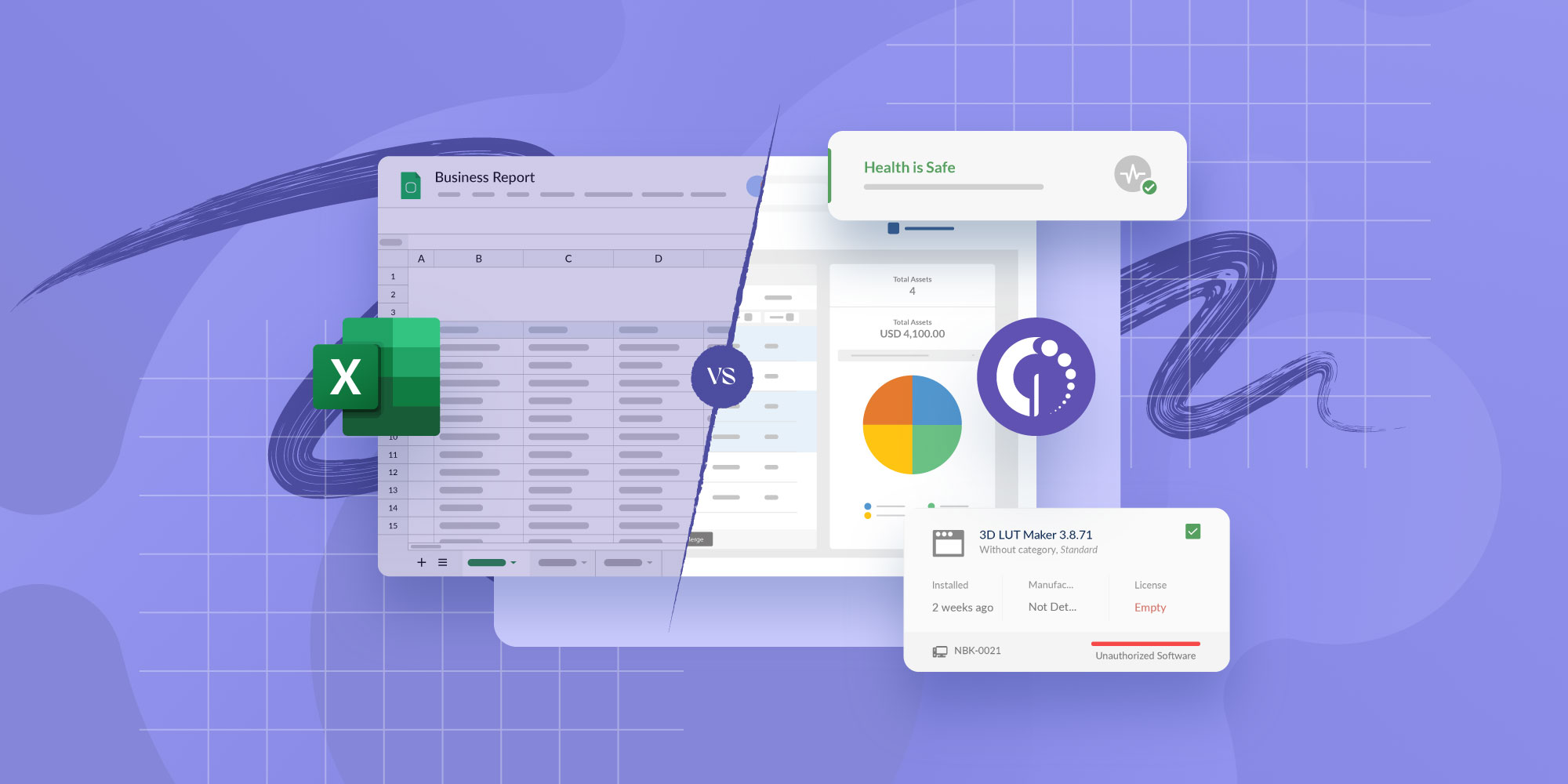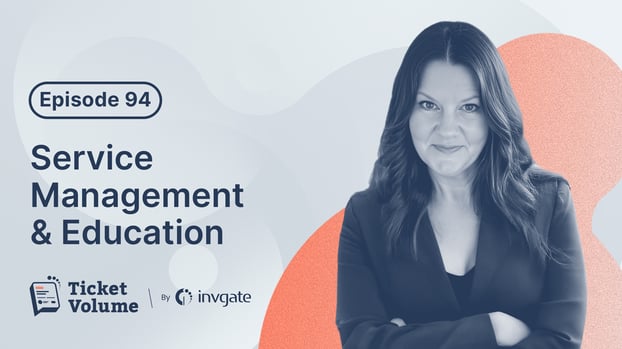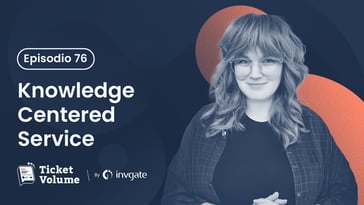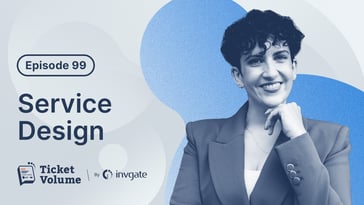What happens when you combine a passion for IT Service Management (ITSM) with the collaborative spirit of higher education? You get someone like Vicki Rogers—a trailblazer who’s redefining what Service Management looks like across public institutions.
In the latest episode of Ticket Volume, Vicki joined host Matt Beran to share her journey from the University of West Georgia to Georgia Tech, where she now serves as the Director of Service Management. With decades of experience under her belt, she’s on a mission to bridge gaps, build communities of practice, and optimize IT experiences for students, researchers, and faculty alike.
From leading surveys on Service Management maturity to spearheading grassroots initiatives across the University System of Georgia, Vicki’s story is packed with insights. But her secret sauce? A relentless focus on people, relationships, and using data to drive change.
Curious to learn more? Let’s dive into the conversation and explore how Service Management can be a catalyst for transformation in higher education. Here are the highlights of episode 94.
Building a community of practice for IT Service Management
#1: Creating a network across institutions
Imagine 26 institutions, each with its own challenges, resources, and IT priorities, coming together to share knowledge and improve Service Management practices. That’s precisely what Vicki set out to achieve within the University System of Georgia. Her vision? A thriving community of practice where IT professionals can collaborate, learn, and tackle common obstacles as a team.
Vicki’s initiative is rooted in the idea that no one should have to face these challenges alone. By leveraging her connections from previous roles and her involvement with the CIO Council, she’s laid the foundation for a collaborative network. This effort is particularly crucial for smaller institutions, which often lack the resources to establish full-fledged Service Management frameworks.
#2: Survey insights: Understanding maturity and challenges
To kick off her mission, Vicki conducted a survey across institutions in Georgia, uncovering a spectrum of Service Management maturity levels. The findings were eye-opening: nearly half of the respondents didn’t even have a dedicated Service Management employee. This disparity highlighted the urgent need for shared resources and mutual support.
Her survey also shed light on what institutions are measuring, the tools they’re using, and how they perceive their Service Management efforts. Armed with this data, Vicki crafted a tailored approach to support each institution, regardless of size or maturity.
#3: Grassroots efforts for change
Sometimes, the most powerful movements start from the ground up. Vicki’s strategy emphasizes the value of grassroots efforts, where those working closest to the challenges come together to brainstorm, share solutions, and drive improvement.
She recently organized a state-wide community meeting to present her survey findings and spark conversations about next steps. By empowering IT professionals at every level, Vicki is fostering a culture of collaboration that extends beyond individual institutions. It’s a reminder that even in an era of advanced tools and technologies, people remain the most important asset in Service Management.
The unique challenges of higher education IT Service Management
#1: Balancing diverse stakeholder needs
In higher education, IT Service Management isn’t just about fixing classroom projectors or ensuring Wi-Fi connectivity on campus—it’s about supporting a vast and diverse community. At Georgia Tech alone, the IT team serves over 30,000 students, faculty, and researchers, including a marine scientist conducting research from a boat in Fiji.
|
|
"It's not just about the students in the classroom. It's about all the other work that's being done. When that researcher sitting on a boat in Fiji has a problem with their computer, how do you support that? How do we do that in a timely, efficient, effective way?" Vicky Rogers |
This complexity demands IT teams that are agile, resourceful, and capable of addressing a wide range of needs, often across geographical and institutional boundaries.
#2: Addressing resource constraints
For smaller institutions in the University System of Georgia, the challenges are even more pronounced. Many of these schools operate without a single dedicated Service Management employee, making it nearly impossible to implement best practices.
"How do you run a Service Management shop without full-time staff? You can’t fly a plane and fix it at the same time," Vicki quipped, capturing the frustration and determination of teams working with limited resources.
By sharing expertise and pooling resources, Vicki’s community-building efforts aim to bridge this gap, providing smaller schools with the support they need to better serve their students and faculty.
#3: The importance of storytelling and data
One of the cornerstones of Vicki’s approach is using data and storytelling to advocate for change. Whether it’s presenting survey findings to her peers or crafting an “elevator speech” to demonstrate the value of Service Management, Vicki believes in the power of evidence-based narratives.
"People want to get better. They want to serve their customers and make them happy—they just don’t always know the way to do it," she explained. Data serves as a bridge, connecting intention with actionable insights and creating opportunities for improvement across institutions.

The philosophy of Service Management: Tools, processes, and people
#1: Tool agnosticism and process-first thinking
When it comes to tools, Vicki Rogers has a refreshingly pragmatic view: the tool is just that—a tool. It’s not about which platform you use but how effectively you use it to support your organization’s goals. "You can do this with Excel," Vicki joked during the episode, challenging the idea that a single platform is the ultimate solution. "I think a tool is a tool—it’s how you use it and what you get out of it.", she said.
While Vicki acknowledges that tools need to scale with complexity, her point resonates: the foundation of effective Service Management lies in the processes and principles underpinning the tool, not the technology itself. Of course everything is easier with a comprehensive tool, like InvGate Service Management.

#2: People-first Service Management
At the heart of Vicki’s philosophy is a strong belief in the power of relationships and collaboration. Change doesn’t happen in isolation—it’s fueled by trust, humility, and a shared sense of purpose. Vicki emphasized that no single person has all the answers, but by working together and engaging with diverse perspectives, teams can unlock greater insights and innovative solutions.
She also highlighted the critical role of leadership in fostering environments where IT professionals can reflect, learn, and grow. Whether it’s scheduling time for skill-building or creating opportunities for open dialogue, leaders have a responsibility to champion continuous improvement across their teams.
Key takeaways for IT leaders
#1: Foster a culture of collaboration
One of the strongest messages from Vicki’s story is the importance of building connections. Whether through formal communities of practice or grassroots initiatives, IT leaders should prioritize creating spaces for teams to share ideas, learn from one another, and collectively tackle challenges. Collaboration isn’t just beneficial—it’s essential for navigating the complexities of modern IT environments.
#2: Advocate for continuous improvement
Vicki’s experience highlights the value of carving out time for reflection and growth. IT leaders should encourage their teams to move beyond day-to-day operations and invest in skills, training, and strategic conversations. This could be as simple as a quarterly workshop or as robust as a dedicated improvement program, but the goal remains the same: to create opportunities for growth and innovation.

#3: Use data to tell your story
Data is more than just numbers—it’s a powerful tool for driving change. Vicki emphasized the importance of leveraging data to highlight pain points, track progress, and advocate for resources. By presenting compelling evidence, IT leaders can build stronger cases for investments in tools, staff, and processes that elevate Service Management practices.
#4: Lead with empathy and humility
Successful leaders don’t have all the answers, and they don’t need to. Vicki’s emphasis on humility serves as a reminder that great leadership involves listening, understanding, and working alongside teams to find solutions. By approaching challenges collaboratively and maintaining a people-first mindset, IT leaders can inspire trust and drive meaningful change.
Conclusion
Vicki Rogers’ journey is a testament to the transformative power of collaboration, data-driven decision-making, and people-first leadership in IT Service Management. From building a community of practice to navigating the unique challenges of higher education, her story offers valuable lessons for IT leaders everywhere.
As Vicki reminds us, progress starts with creating space for growth and connecting with others. Whether you’re tackling resource constraints or striving for service excellence, the path forward lies in continuous learning, empathy, and a commitment to improvement. You can find the full episode on Apple Podcasts, Spotify, YouTube, or your favorite podcast platform.















